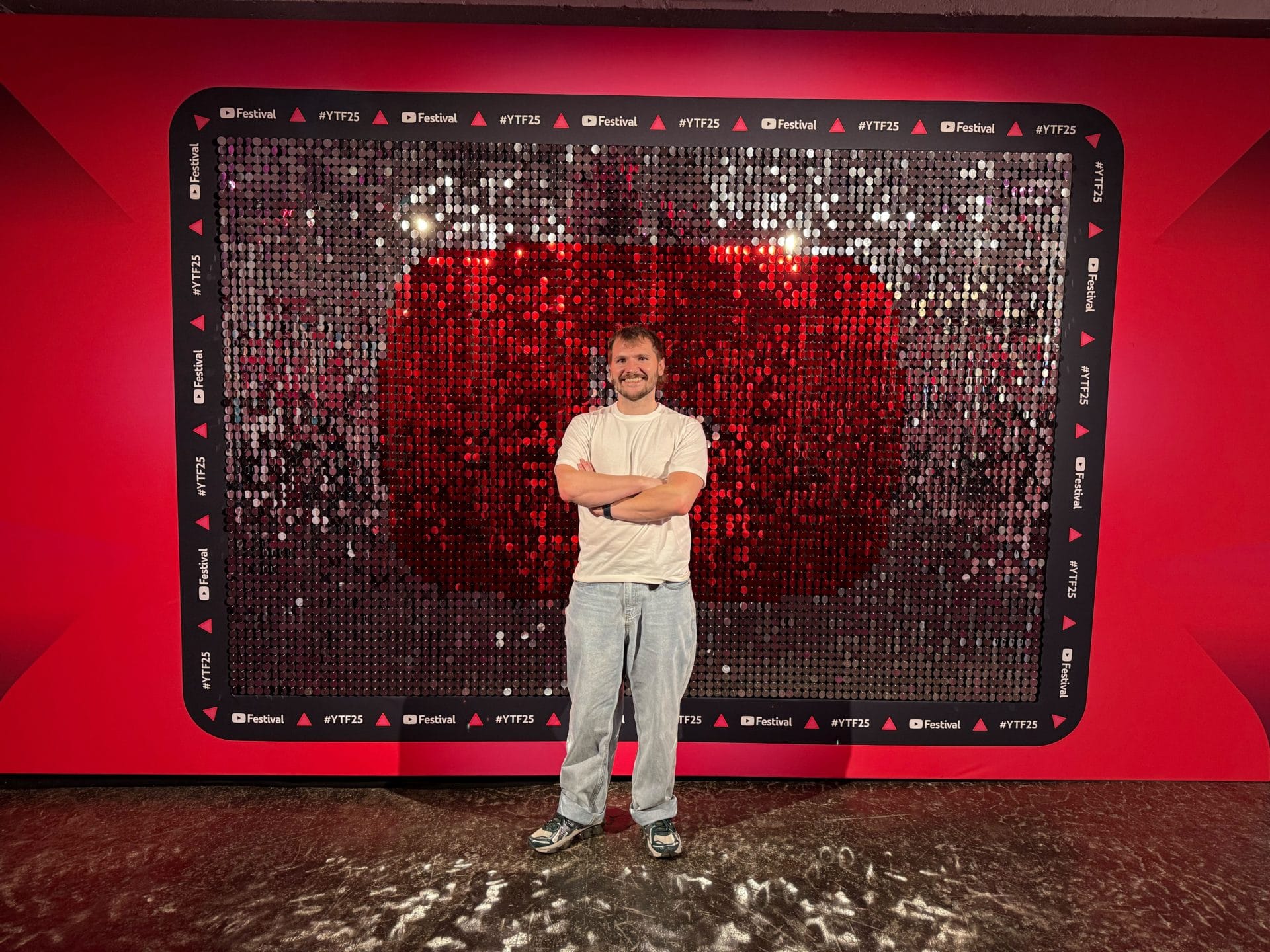
From Viral Clips to Cultural Infrastructure: YouTube’s Evolution at 20
YouTube might be 20 years old, but last week’s festival made one thing clear: this isn’t a platform looking back, it’s reshaping what comes next.
The big screen, once the stronghold of legacy broadcasters, now belongs to creators, communities, and an algorithm that understands attention better than most marketers. This wasn’t a glossy industry celebration. The smartest brands are now paying close attention.
Two decades ago, YouTube was best known for viral clips filmed on grainy webcams, a place where “Charlie Bit My Finger” and “Sneezing Panda” captured attention for reasons no one could quite explain.
Last week, as the platform marked its 20th anniversary, that early, chaotic creativity was rightly celebrated. YouTube is reshaping how audiences consume culture, and how brands need to think about attention.
Here are three things that stood out to us:
- Creators aren’t scaling audiences, they’re building infrastructure
Forget the phrase “user-generated content”. Today’s top creators are running studios, building teams, and launching global campaigns. This isn’t a side hustle economy. It’s a new tier of media businesses built by creators who no longer need gatekeepers to grow.
- The screen has changed, and the behaviour with it
We’re not just “watching YouTube on TV now”. YouTube is the platform where you can deep-dive into medieval sword-making, live stream sports, and accidentally watch a raccoon eating grapes. We’re interacting with Shorts, dipping in and out of livestreams, buying through creators, and jumping from long-form to vertical without switching platforms. The entire media consumption loop is playing out on one screen, and YouTube owns more of it than most brands realise.
- One of the more interesting themes at the festival was how AI is being embedded into the creative process. Not to automate creativity, but to interrogate it.
Need to test ten versions of an idea? You now can, and in hours, not weeks. Want to localise for global audiences? You can do that too, without watering down the original voice. But the deeper shift is this: AI is changing how we make decisions, not just how we make content. It’s exposing bias, speeding up iteration, and making the creative process less reliant on gut feel, and more driven by actual behaviour.
For clients, the opportunity is to treat YouTube as cultural infrastructure;
- Build ecosystems, not bursts – Use Shorts, long-form and live to create an always-on presence that builds lasting cultural relevance.
- Design for the big screen – Treat YouTube on TV as a shared attention space, tailoring creative for group viewing and living-room influence.
- Partner with creators as cultural architects – Collaborate with creators as co-builders of culture, not just channels for one-off placements.
If YouTube once felt like a social platform with big audiences, it now feels like a global broadcaster with cultural depth, and the measurement, formats and fluidity that traditional channels still lack.
YouTube might be optional, but ignoring it means missing out on one of the most influential platforms in shaping attention today.
At Propellernet, we help ambitious brands show up in the right moments and strategy that drives performance. Whether you’re rethinking your video approach, exploring creators, or trying to make sense of AI’s role in your marketing, we can help you navigate what’s next, and make it meaningful.



